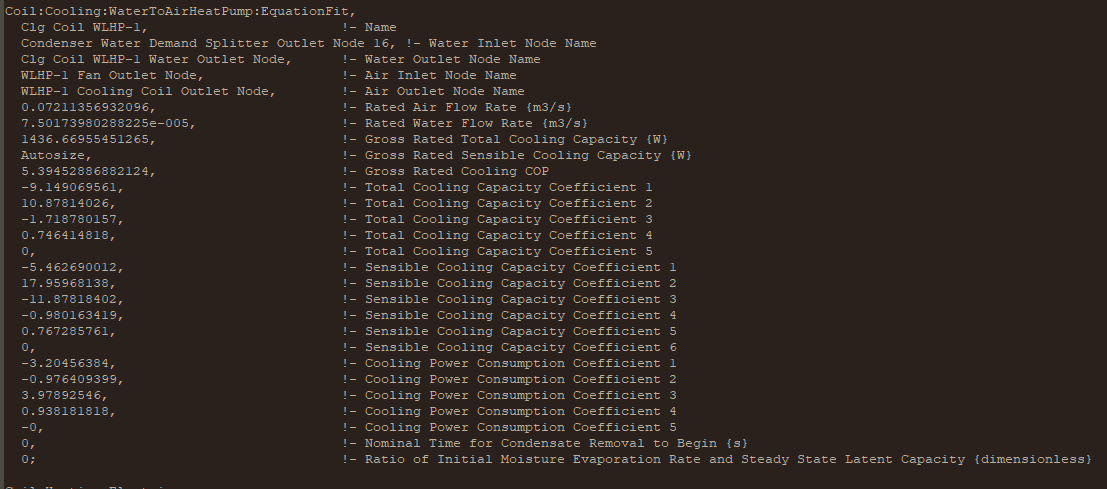We're working on a CBECC-Com model for a high-rise res project that's using WSHP's. The engineer has specified high-efficiency units with variable speed compressors. However, the energy performance is lousy compared to the chilled water baseline. We experimented with swapping the WSHP to ASHP, and the performance shot up significantly. This is probably a bad idea (i.e. I'll know exactly where the brick wall is but can't go through it), but I am trying to reverse-engineer the modeling of the WSHP to see how the COP is affected at different part-load and CDW loop temp conditions.
I've reviewed a prior version of the T24 Appendix 5.7 spreadsheet with performance curves. That's been helpful in the past, but I couldn't find any E+ curves that seemed to match what's being modeled.
Here's a snippet from the IDF defining the cooling coil and with curve fit data:
 (I tried pasting directly, but the code formatting blew up, sorry)
(I tried pasting directly, but the code formatting blew up, sorry)
I see the three types of curve coefficients, and I understand how the curves work, but how do I know whether these are quadratic, biquadratic, cubic, etc.? I'd like to set them up in a spreadsheet to adjust input parameters and see what happens. Can somebody walk me through how to do that, or provide a reference that does?
I have also reviewed the E+ doc here, but didn't find an explanation of the relevant curves: link text I assume that documentation is not the exact right fit because it describes many more variable speed functions that I see in the CBECC-Com GUI or IDF file.. I'm guessing this is why we'll be stuck cranking up the rated EER since we can't account for the better turn-down, etc. of the selected units..



